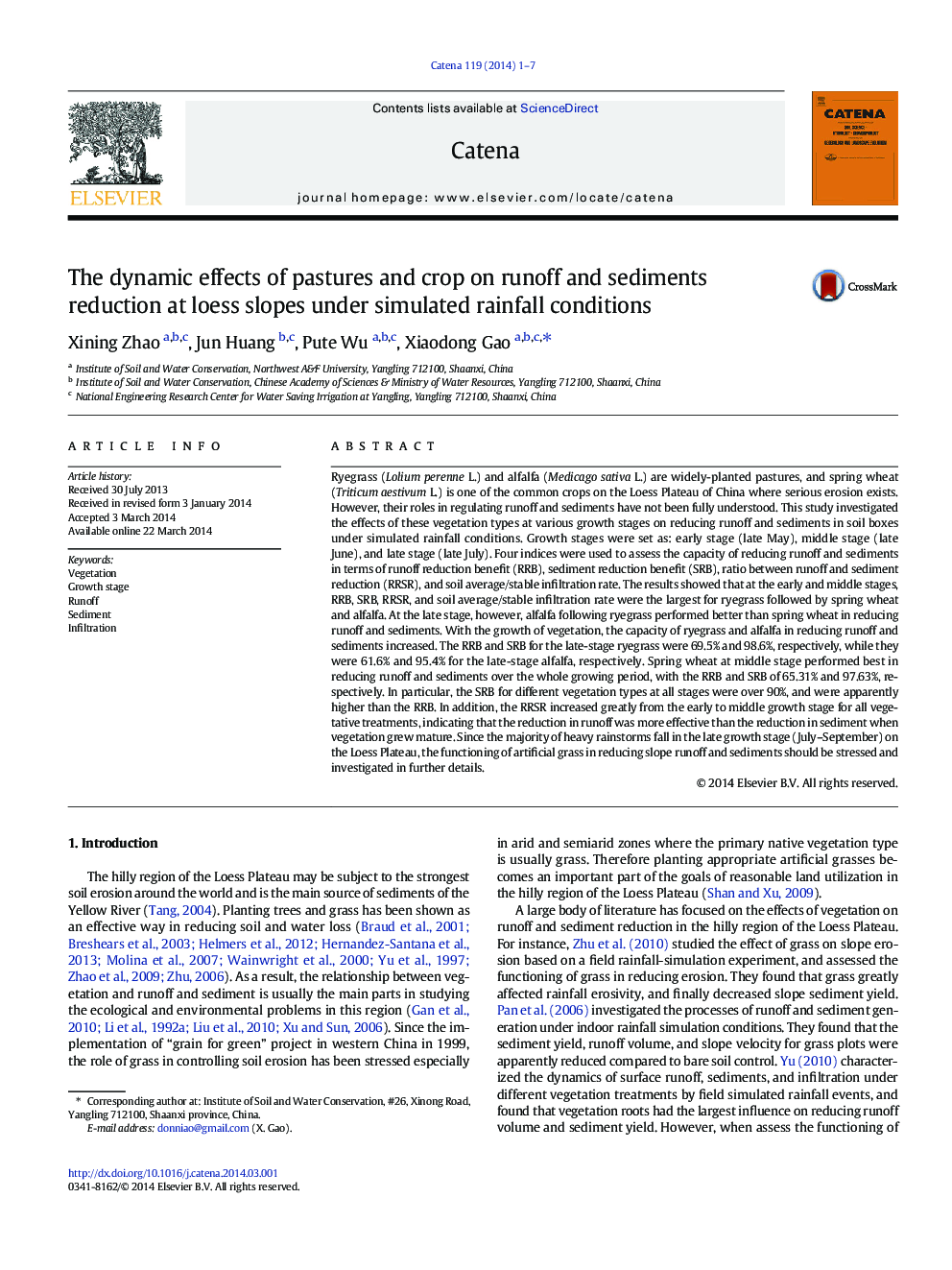| کد مقاله | کد نشریه | سال انتشار | مقاله انگلیسی | نسخه تمام متن |
|---|---|---|---|---|
| 4571440 | 1629233 | 2014 | 7 صفحه PDF | دانلود رایگان |
• Effects of artificial grass and crops on runoff and sediment yielding were probed.
• Ryegrass performed best in reducing soil and water loss among treatments.
• The capacity of regulating runoff and sediments changed with growth stages.
Ryegrass (Lolium perenne L.) and alfalfa (Medicago sativa L.) are widely-planted pastures, and spring wheat (Triticum aestivum L.) is one of the common crops on the Loess Plateau of China where serious erosion exists. However, their roles in regulating runoff and sediments have not been fully understood. This study investigated the effects of these vegetation types at various growth stages on reducing runoff and sediments in soil boxes under simulated rainfall conditions. Growth stages were set as: early stage (late May), middle stage (late June), and late stage (late July). Four indices were used to assess the capacity of reducing runoff and sediments in terms of runoff reduction benefit (RRB), sediment reduction benefit (SRB), ratio between runoff and sediment reduction (RRSR), and soil average/stable infiltration rate. The results showed that at the early and middle stages, RRB, SRB, RRSR, and soil average/stable infiltration rate were the largest for ryegrass followed by spring wheat and alfalfa. At the late stage, however, alfalfa following ryegrass performed better than spring wheat in reducing runoff and sediments. With the growth of vegetation, the capacity of ryegrass and alfalfa in reducing runoff and sediments increased. The RRB and SRB for the late-stage ryegrass were 69.5% and 98.6%, respectively, while they were 61.6% and 95.4% for the late-stage alfalfa, respectively. Spring wheat at middle stage performed best in reducing runoff and sediments over the whole growing period, with the RRB and SRB of 65.31% and 97.63%, respectively. In particular, the SRB for different vegetation types at all stages were over 90%, and were apparently higher than the RRB. In addition, the RRSR increased greatly from the early to middle growth stage for all vegetative treatments, indicating that the reduction in runoff was more effective than the reduction in sediment when vegetation grew mature. Since the majority of heavy rainstorms fall in the late growth stage (July–September) on the Loess Plateau, the functioning of artificial grass in reducing slope runoff and sediments should be stressed and investigated in further details.
Journal: CATENA - Volume 119, August 2014, Pages 1–7
